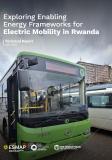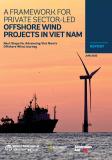Publications
As one of the eight missions under India’s National Action Plan for Climate Change (NAPCC), the Jawaharlal Nehru National Solar Mission (JNNSM) was launched in January 2010 with the aim of accelerating India’s march toward grid parity in solar power. The JNNSM envisages the achievement of grid parity through long-term and predictable policy, large-scale deployment, research and development, and domestic production of critical materials, components, and products along the value chain. Considering that India has immense solar potential, the JNNSM can serve as a crucial element of India’s response to the challenges of energy security and climate change.
Phase I of JNNSM, with a capacity target of 1 GW, was positioned as a first step in India’s ambitious journey toward 20 GW of capacity addition by the end of Phase III of the JNNSM by 2022. This study looks at the lessons learned and challenges of Phase I of the JNNSM, and lays out issues identified as critical by most stakeholders, which require closer attention and resolution.




